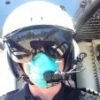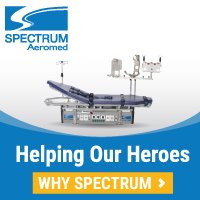ETL and confined area operations
In a lot of situations you'll find yourself approaching a pad that has some tall obstacles around it blocking the wind, so at a certain point over the ground your airspeed will drop from 30-40kts to zero within a split second. The stronger the wind the quicker this will happen. At that point you're pretty much in an OGE hover making your approach to the spot. In a lot of cases like this, the obstacles blocking the wind near the pad, will cause the air on the lee-side to start to flow backwards in towards the base of the obstacle due to a loss of air pressure in that area causing you to not only drop out of ETL, but to have to deal with a pretty strong tail wind on short final approach. Now you have to be quick on the pedals too to prevent the weather vane effect on the tail from causing un-commanded yaw which will require more power to counteract. I've even found my self having to reduce power sometimes due to such a strong tailwind at the last 100ft AGL of the approach putting me back into ETL, except from behind. They're the fun ones![]() !!
!!
Performance planning becomes critical when you're flying in situations like these. Knowing you can hover OGE with extra power in reserve, with your weight and the prevailing conditions is the key. You'll need the extra power in reserve because of the turbulent conditions these obstacles can cause the closer you get to them. Being smooth and deliberate with control inputs by expecting or at least forecasting what's coming next in the approach always requires less power than yanking on the collective at the last second. This will help keep you from an over-torque or exceeding manifold pressure limitations while making for a smoother ride for your pax.
A slow steady approach into the wind is always favored but not always possible because of obstacles or noise restrictions for local areas. If the approach isn't perfect, fix it early, or go around. If you think that the downdrafts caused by the obstacles, or your final approach power check indicates the power required at the bottom is more than you have, go around. If there's anything you should take away from confined area or pinnacle training, it's that go arounds are your friend, and will keep you alive/employed!![]()
There are some great books that hit on this subject, such as Cyclic & Collective by Shawn Coyle, and The Helicopter Pilot's Handbook by Phil Croucher are just 2 of them.
Source: ETL during a crosswind.













1 Comment
Recommended Comments